1. Introduction:
Poseidon, with his mighty trident and tempestuous demeanor, has long stood as a pillar of intrigue and reverence within Greek mythology. As the God of the Sea, earthquakes, and horses, his domain was vast, reflecting not only the ancients’ awe of the natural world but also their deep-seated respect for the unpredictable forces that shaped their lives. In today’s world, Poseidon’s legacy is more than just tales of old; he reverberates through literature, art, and popular culture, continuing to captivate and inspire. Through the waves of time, his stories have evolved, becoming allegories for human strength, ambition, and the ebb and flow of life itself. With this article, our aim is not just to recount well-trodden tales, but to dive deep, offering a comprehensive, accurate, and original understanding of Poseidon, bridging the vast expanse between ancient reverence and modern-day fascination.
| Origin | Greek Mythology |
|---|---|
| Classification | God |
| Family Members | Cronus (Father), Rhea (Mother), Zeus and Hades (Brothers), Hera, Demeter, and Hestia (Sisters) |
| Region | Greece |
| Associated with | The Sea, Storms, Earthquakes, Horses, Trident |
2. Mythical Narratives:
Poseidon’s Birth: A God Born Amidst Turmoil and Titan Rule
In the epochs before the dominion of the Olympians, the Titans held sway over the cosmos. Poseidon’s genesis is intertwined with the tale of these ancient deities. His parents, the Titans Cronus and Rhea, were significant figures in the pre-Olympian world. Cronus, ever paranoid of prophecies that predicted his dethroning by one of his offspring, swallowed each of his children soon after their birth. However, Rhea, heartbroken and determined, managed to save her youngest child, Zeus, by handing Cronus a stone wrapped in cloth instead. As Zeus grew in secret, he would eventually confront and defeat his father, compelling him to regurgitate his swallowed siblings, among whom was Poseidon. This marked the beginning of Poseidon’s journey from the darkness of his father’s belly to becoming one of the supreme rulers of the universe.
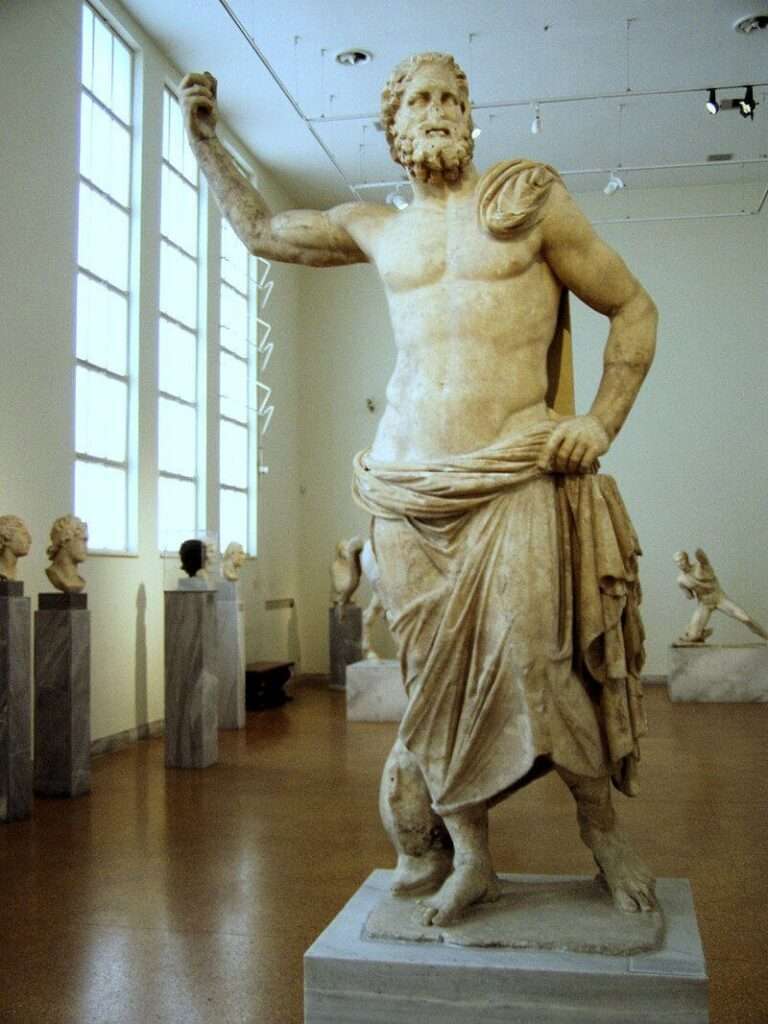
The Division of the World: Three Brothers, Three Realms
Following the Titans’ defeat, the vast universe lay open, awaiting new rulers. The three brothers – Zeus, Poseidon, and Hades – would then draw lots to determine their domains. Zeus, the eldest and the leader of the Olympian revolt against the Titans, took the expansive skies and heavens. Poseidon was granted dominion over the mysterious and boundless seas, while Hades, often deemed the unluckiest in this draw, reigned over the Underworld. This division not only structured the physical realms but also set the stage for numerous myths and conflicts that would arise from territorial disputes and rivalries.
Poseidon’s Rivalries and Alliances: Tumultuous Waters and Shifting Sands
While Poseidon’s authority in the seas was uncontested, his interactions with other deities were anything but placid. One of the most renowned disputes was with Athena over the patronage of the city that would become Athens. Both deities presented the city with gifts, Poseidon striking the ground with his trident, producing a spring, and Athena offering the olive tree. The city chose Athena’s gift, a decision that did not sit well with Poseidon. Yet, it wasn’t all conflict; Poseidon also formed alliances, notably supporting Zeus in various endeavors and having a complex relationship with Demeter, which gave rise to the unique myth of the creation of horses.
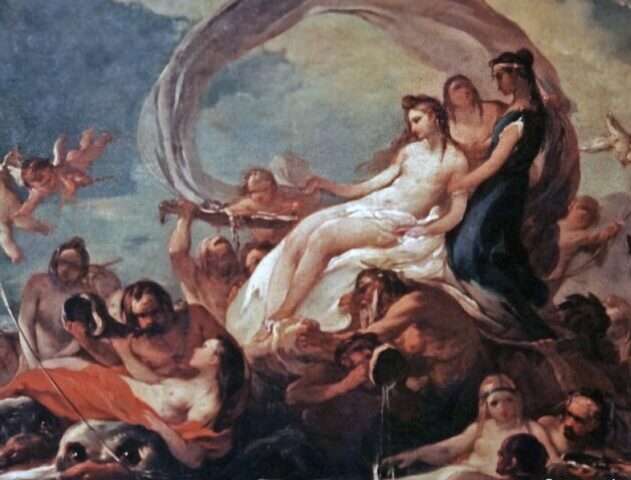
Romances and Offspring: Love, Power, and Lineage
Poseidon’s romances were as vast and turbulent as the seas he ruled. His unions, both consensual and otherwise, with goddesses, nymphs, and mortals resulted in a wide array of offspring, each bearing unique attributes and tales. Theseus, the hero who bested the Minotaur, was born from Poseidon’s union with Aethra. Triton, the merman and Poseidon’s son with Amphitrite, acted as his father’s herald, while Polyphemus, the cyclops, showcased the varied nature of Poseidon’s descendants, standing in stark contrast to the noble Theseus.
3. Symbolism and Iconography:
Poseidon’s Trident: A Symbol of Might and Dominion
The trident, a three-pronged spear, is arguably the most iconic symbol associated with Poseidon. More than just a tool or weapon, the trident is a symbol of his unchallenged rule over the seas and oceans. Its origins trace back to ancient depictions of sea deities, where the trident was a common emblem, symbolizing control over the aquatic realm’s unpredictable and tumultuous nature. When Poseidon brandished his trident, he could summon storms, cause earthquakes, or create calm waters, emphasizing his complete dominion over the sea and its many moods.
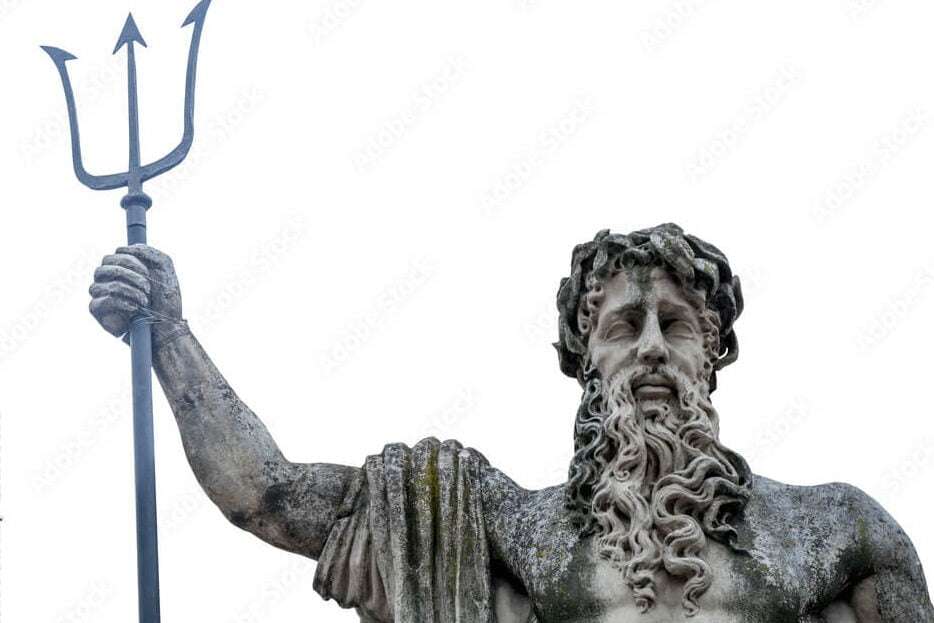
The Horse: A Surprising Emblem of the Sea God
While the connection between the sea and horses may not seem immediately apparent, in Poseidon’s mythology, it is profound. The horse became linked to Poseidon due to a captivating myth involving his courtship of Demeter. To escape his advances, Demeter asked Poseidon to create the most beautiful creature, resulting in the birth of the horse. Thus, beyond the waves and waters, Poseidon became revered as the god of horses, further expanding his divine jurisdiction and adding layers to his complex character.
Diverse Aquatic Symbols: Echoing the Richness of the Sea
Beyond the trident and horse, various other symbols are associated with Poseidon, each narrating a different facet of the sea god’s persona:
- The Bull: Often seen in ancient art where Poseidon is depicted as a muscular man with the legs or horns of a bull, emphasizing his virile and powerful nature.
- The Dolphin: A representation of grace, intelligence, and navigation, the dolphin stands for the more harmonious aspects of Poseidon’s dominion. It signifies the balance between the god’s tempestuous temper and his more benign, protective role over sailors and sea-farers.
- The Fish: Simple yet profound, the fish is an emblem of life and fertility of the seas, highlighting Poseidon’s role as the nurturer of marine life and guardian of the oceans’ abundant bounty.
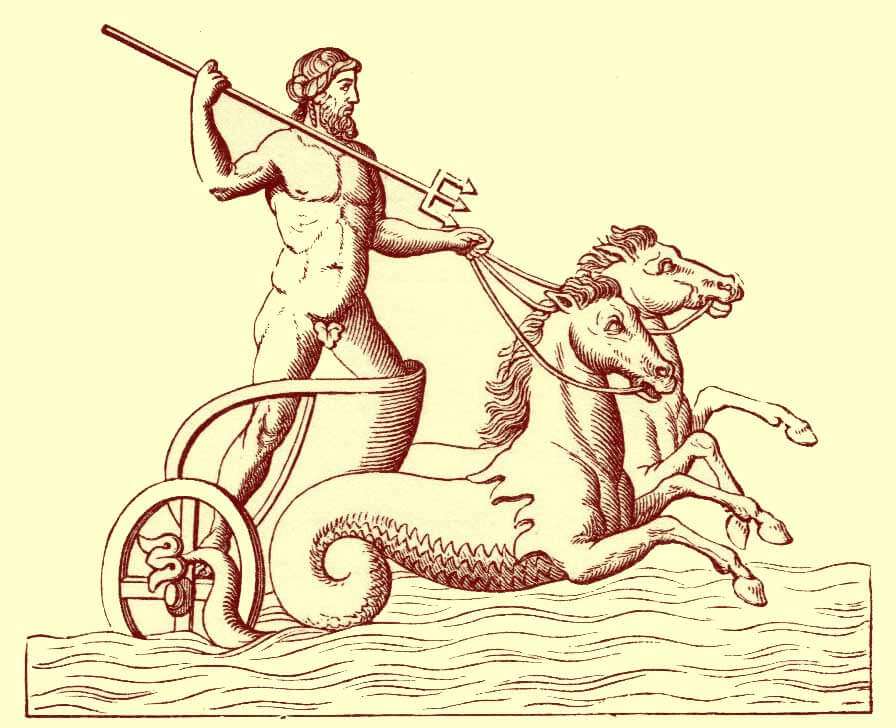
The symbols and emblems associated with Poseidon are not mere artistic choices; they weave a narrative tapestry that offers insight into how the ancients viewed this complex deity, his roles, and his realm. Through these symbols, Poseidon’s multifaceted nature – encompassing power, passion, creativity, and nurturing – is vividly brought to life.
4. Poseidon’s Temples and Places of Worship:
The Famed Temple of Poseidon at Sounion: A Majestic Ode to the Sea Deity
Perched on the edge of Cape Sounion, overlooking the Aegean Sea, the Temple of Poseidon stands as a testament to the ancient Greeks’ reverence for the god of the seas. Constructed in the mid-5th century BCE, this Doric temple with its imposing columns has become synonymous with Poseidon’s worship. Archaeological studies suggest that this sacred spot had been chosen for its natural beauty, perfectly capturing the essence of Poseidon’s realm: the vast, unending sea. With inscriptions and graffiti, including one attributed to the famous poet Lord Byron, the temple’s stones narrate stories of pilgrims and travelers paying homage, seeking the sea god’s blessings for safe voyages.
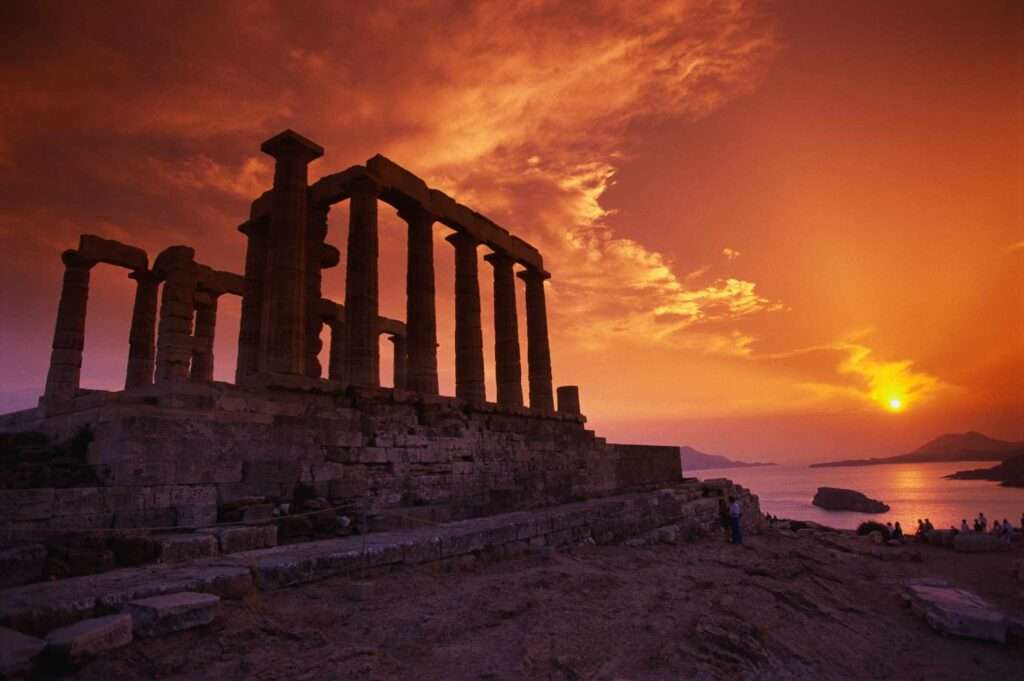
Beyond Sounion: Delving Deeper into Poseidon’s Worship Sites
While Sounion might be the most iconic, numerous other temples and worship sites dedicated to Poseidon dot the Greek landscape. Some of these include:
- The Sanctuary of Poseidon in Isthmia: Located near Corinth, this sanctuary played a pivotal role in the Isthmian Games, one of the major Panhellenic sports festivals. The site, with its temple ruins, racecourse, and theater, reflects the multifaceted nature of Poseidon’s worship, blending athleticism with spiritual reverence.
- The Temple of Poseidon in Helike: This temple was tragically submerged in a catastrophic earthquake in 373 BCE. Recent archaeological expeditions have unearthed remains, offering tantalizing glimpses into its once-grand stature and the city’s devotion to Poseidon.
- Poseidon’s Sanctuary in Onchestos: Mentioned in Homer’s “Iliad”, this sanctuary, although less grand than others, was significant in the Mycenaean era, emphasizing the god’s lasting influence across different periods.
Sacred Spaces in Context: Anchoring Ancient Greek Religious Practices
The significance of these temples goes beyond mere architectural marvels; they were centers of socio-religious activities. Pilgrims from distant lands would converge, offering sacrifices to appease the god, seeking his protection from sea storms or invoking his blessing for bountiful catches. Festivals, games, and ceremonies conducted in these sacred grounds were integral to ancient Greek society, fostering communal bonds and reinforcing shared beliefs. Additionally, these temples, with their strategic locations overlooking seas or important trade routes, highlight the blend of practicality and spirituality. They served dual purposes: as places of worship and as vantage points, ensuring safety and prosperity for the city-states they anchored.
Poseidon’s temples and sacred sites offer invaluable insights into the ancient Greeks’ psyche, reflecting their deep-rooted beliefs, hopes, and fears concerning the vast, unpredictable seas and the deity that ruled over them.
5. Modern Interpretations and Influence:
From Ancient Epics to Modern Tales: Poseidon in Literature
While Poseidon’s legacy can be traced back to ancient texts, his influence remains profound in contemporary literature. Homer’s “Odyssey” offers one of the earliest detailed accounts of Poseidon as the relentless antagonist to Odysseus. His anger towards the Trojan War hero not only emphasizes his power and dominance over the seas but also sheds light on the ancient Greeks’ understanding of human fate and divine intervention. In modern literature, Poseidon often appears as a complex figure, embodying both wrath and benevolence, serving as a symbol for the unpredictable nature of life and the challenges humans face. Contemporary authors draw parallels between Odysseus’ trials and today’s struggles, suggesting that humanity’s relationship with the forces of nature, as personified by Poseidon, remains as intricate as ever.
Poseidon’s Splash in Pop Culture: A Dive into Movies, Series, and Beyond
The majestic god of the seas has made significant waves in popular culture. From animated films to epic sagas, Poseidon’s character has been adapted, reimagined, and presented in various shades:
- Movies: Films like “Clash of the Titans” and “Percy Jackson & the Olympians” portray Poseidon in diverse roles, ranging from a benevolent father figure to a mighty god with the power to shake the Earth.
- Series: Television series, especially those rooted in mythology like “Hercules: The Legendary Journeys,” often bring Poseidon into the narrative, highlighting his conflicts and relationships with other gods and mortals.
- Literature: Modern fantasy novels, inspired by Greek mythology, often incorporate Poseidon as a pivotal character, exploring his multifaceted personality and its implications in a contemporary setting.
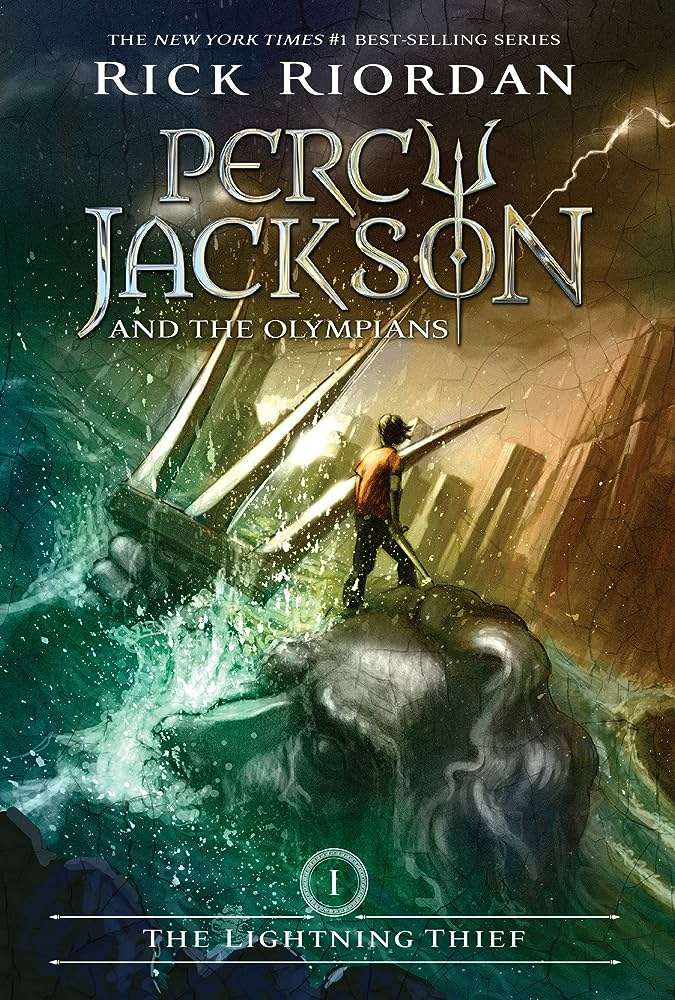
Contemporary Importance in Greece: From Myth to Modern-Day Significance
Even today, Poseidon’s presence is palpable in Greece, especially in coastal cities. Festivals celebrating the sea god, reminiscent of ancient traditions, are held in many seaside towns. These events blend religious rituals with cultural celebrations, highlighting Greece’s enduring connection with the sea. In cities like Athens, Poseidon’s figure is prominently featured in art and architecture, serving as a reminder of the nation’s rich mythological heritage. Additionally, maritime activities, which play a crucial role in Greece’s economy, often invoke Poseidon’s blessings, reflecting the timeless hope for safe voyages and bountiful catches.
From timeless epics to modern-day movies, Poseidon’s influence traverses eras, mediums, and cultures. His enduring presence is a testament to the universality of the themes he embodies and the timeless allure of Greek mythology.
6. Conclusion:
In the vast tapestry of Greek mythology, Poseidon emerges as one of the most multifaceted deities, a figure of immense power, passion, and complexity. As the god of the seas, earthquakes, and horses, his influence touches diverse realms, reflecting the ancients’ deep respect for and fear of the unpredictable forces of nature. The tales surrounding Poseidon—whether they speak of his wrath against those who defied him, his romantic entanglements, or his rivalries with fellow gods—offer a nuanced understanding of a deity who is both venerated and feared.
This duality in Poseidon’s character, as both protector and destroyer, mirrors the ancient Greeks’ relationship with the sea: a source of sustenance and prosperity, yet simultaneously a realm of peril and unpredictability. But Poseidon’s legacy is not confined to antiquity. His resonance in modern literature, films, and popular culture underlines the timeless nature of the themes he embodies. From the perilous journey of Odysseus, a man at the mercy of Poseidon’s wrath, to contemporary representations in cinema and literature, the god’s tales have been retold and reinterpreted, adapting to the zeitgeist of each era.
In today’s Greece, the echo of Poseidon’s legacy is unmistakable. Festivals, maritime traditions, and even the daily lives of those in coastal cities are imbued with a sense of reverence for the deity that once held—and perhaps still holds—sway over their fates. As we reflect upon Poseidon’s enduring impact, we are reminded of the age-old bond between humanity and the vast, enigmatic seas. A bond that, much like Poseidon’s tales, remains as profound and intricate today as it was in the days of yore.
